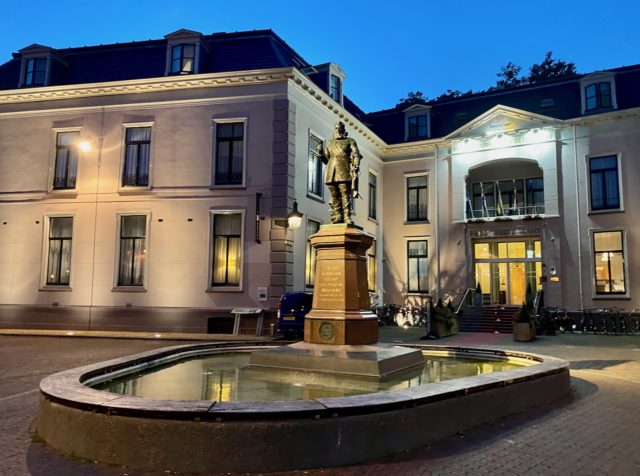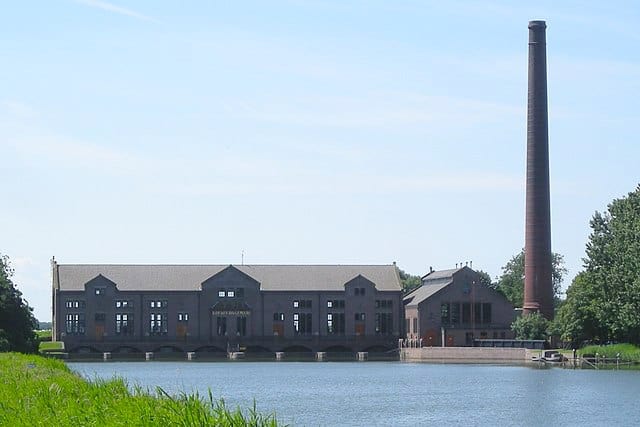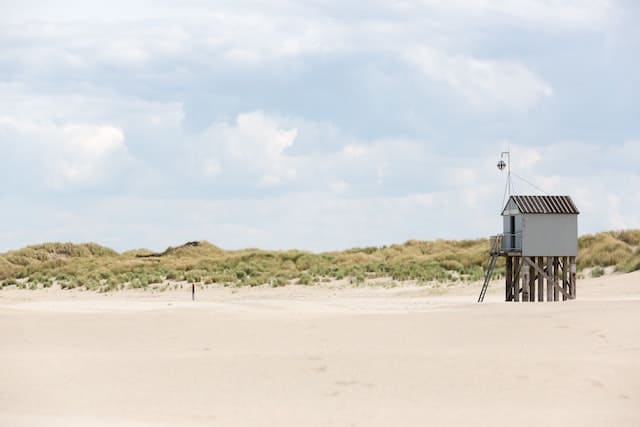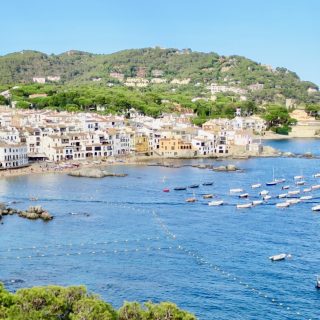Friesland is a province in the north of the Netherlands. The only province with its own language, Friesland has a distinct history and culture that sets it apart from the rest of the country. It is a land of lakes, waterways and endless meadows grazed by the famous black-and-white Frisian cows, punctuated by picturesque villages and historic towns. Off the coast, separated from the mainland by a shallow sea, lie the Wadden Islands, a UNESCO World Heritage site. Friesland is a popular holiday destination: visitors come here to sail around its extensive network of lakes and canals, hike through its national parks, find seclusion on one of the islands or explore its historic towns. Here’s my travel guide to the best places to visit in Friesland on a road trip:


The Best of Friesland road trip
I’ve visited Friesland many times and I’ve pinned many of the best places to visit in Friesland on the map below. I’ve also included a suggested ‘Friesland tour’ road trip route that starts and ends in Leeuwarden, the capital of Friesland. This road trip can easily be done in four days but I recommend adding a few extra days to visit one of the Wadden Islands and/or spend an extra night or two in Leeuwarden, the European Capital of Culture in 2018.
This Friesland guide contains links to three services I often use myself and can recommend: Booking.com (for hotel bookings), Rentalcars.com (for car hire) and GetYourGuide (for easy-to-book tours). If you make a booking via one of these services, I will receive a small commission (at no extra cost to you). These commissions help me to maintain my blog and share more travel experiences with you.
The Eleven Cities of Friesland
Friesland has eleven historic cities. Many of these cities are not more than villages in terms of size but which received city rights as far back as the 11th century. The Eleven Frisian Cities are: Leeuwarden, Sneek, Ijlst, Sloten, Stavoren, Hindeloopen, Workum, Bolsward, Harlingen, Franeker and Dokkum. Some of these cities such as Stavoren and Hindeloopen joined the Hanseatic League, a group of merchant guilds in northwestern and central Europe, in the 14th century and became wealthy trading hubs.

Elfstedentocht
With its many lakes and waterways, Friesland is all about the water! In the summer months, the water is filled with countless sailboats and windsurfers. In the winter, when it freezes, Frisians take to the ice on their skates. Friesland is home to the ‘Elfstedentocht‘ (Eleven Cities Tour), a legendary ice-skating marathon that spans 200km and passes the eleven historic Frisian cities.

Each time it freezes in the Netherlands, the eyes of the entire country shift to Friesland! Conditions have to be perfect though for the ice masters to give the green light. For instance, the ice along the 200km route has to be more than 15cm thick. Frisians take speed-skating very seriously – in fact, many of the Dutch speed-skating World and Olympic champions come from Friesland.
11 Fountains of Friesland
In conjunction with Leeuwarden – European Capital of Culture 2018, eleven artists from around the world were invited to design unique fountains in each of the Eleven Frisian Cities. When you visit these cities, make sure to look out for the 11Fountains! Each of the eleven cities has one.

The Best of Friesland road trip route in this guide includes all eleven cities. If you’re very fit, you could even do this route by bike or on foot!
How to get to Friesland
Friesland is less than a two-hour drive from Amsterdam via the A7 (often faster) or A6 highways. Taking the A7 highway has the added advantage that it crosses the historic Afsluitdijk, a key defense line to protect low-lying areas of the Netherlands from the sea, that connects North Holland with Friesland. This Friesland road trip can also be easily combined with the shorter Markermeer road trip just south of Friesland. Alternatively, you can take the train from Amsterdam to Leeuwarden (2 hours) and pick up a rental car there. Search for flights to Amsterdam with KLM.

The best places in Friesland to visit
For the purposes of this guide, this Friesland road trip starts and ends in Leeuwarden, like the ‘Elfstedentocht’ and can be done in 4-5 days. Here are the best places in Friesland to visit during your road trip.
Leeuwarden
Leeuwarden is the capital of Friesland. Home to more than 100,000 inhabitants, it’s the economic and cultural centre of the province. In 2018, Leeuwarden was named the European City of Culture. Leeuwarden is one of the towns in the Netherlands I recommend to visit.

It’s a pleasant city with leafy parks, picturesque canals and a vibrant café culture. There are around 800 national monuments, including the Oldehove (a leaning, unfinished church tower) and the City Hall. There are also numerous museums to visit including the Fries Museum (an art, culture and history museum) and the Princessehof Ceramics Museum. To learn more about Leeuwarden, I recommend joining a canal tour. Visit the city’s tourism portal for more info.




I recommend spending 1-2 nights in Leeuwarden to see the sights. Hotels in the city centre I can recommend are Boutique Hotel Catshuis, Fletcher Hotel (located in a historic palace) and Post Plaza Hotel.

Restaurants in Leeuwarden I’ve eaten at and can recommend include By US, Eindeloos, De Koperen Tuin (in the leafy environs of the Prinsentuin gardens) and Barrevoets.

Dokkum
From Leeuwarden, head northeast to Dokkum. This historic city is characterised by impressive fortified walls and a charming city centre. It’s a joy to stroll around the city’s canals and walls, admire the gorgeous houses and relax at a waterfront café. The city’s fountain is also one of my favourites of the 11Fountains.



From Dokkum, head for the north coast. You can continue towards Moddergat or stop at the Lauwersmeer National Park. The park, with its thick forests and lakes, is popular for leisurely hikes and bird-watching. The park is also an internationally-recognised Dark Sky Park – free from light pollution, people come here to enjoy the night sky. On clear nights, the Milky Way can easily be seen, a rarity in this highly-urbanised country. Visit the park’s website.
Moddergat
This village of about 200 people lies directly behind an impressive dike. In the 18th-19th centuries, Moddergat and its sister village, Paesens, had a large fishing fleet which enjoyed direct access to the Wadden Sea. In 1883, the villages were struck by disaster as a storm wiped out its fishing fleet and killed 83 villagers. This tragedy is commemorated by a monument on the dike. There’s also a little museum comprised of the old fishermen’s houses.

These days, Paesens-Moddergat is a popular hiking area. People come here to enjoy the unique landscape that stretches out into the horizon from the top of the dike.

Franeker
From Moddergat, continue southwestwards to Franeker via Holwerd. Drop by in Holwerd to see the 5-meter high sculpture “Waiting for High Tide” that depicts two women looking out to the Wadden Sea.
Franeker can trace its history back to 800 AD (!) when it was a Carolingian stronghold. In modern times, Franeker is most famous as being the home of the 18th century Eise Eisinga Planetarium, the oldest working planetarium in the world. One of the top-100 heritage sites in the Netherlands, in 2023, the Planetarium was added to the list of UNESCO World Heritage sites. A visit to this museum is a fascinating experience!


Harlingen
Your next stop is Harlingen. A short hop from Franeker, Harlingen is a lively port city with an amazing number of historic monuments that reflect its wealthy past. Stroll around the historic warehouses and admire the beautiful houses along the Noorderhaven. I recommend spending the night to enjoy the lively food and café scene. Search for hotels in Harlingen (Booking.com) or visit the city’s tourism portal.


Harlingen is also the gateway to the Wadden Islands of Vlieland and Terschelling. Regular ferry services depart from Harlingen’s port. As no cars are permitted on Vlieland, the port also has a large parking zone.
Bolsward
From Harlingen, continue along the coast before turning off to Bolsward, another of the Frisian Eleven Cities. Bolsward is a charming town with a rich mercantile history. There are several notable buildings including the 13th century Broerekerk (church) which is now a ruin after a fire destroyed it in 1980, and the Stadhuis (City Hall).

Workum
Workum, your next stop, is a lovely town for a quick stroll. Famous for its pottery, Workum has several noteworthy museums, such as the Jopie Huisman art museum, and churches. Just outside the town, look out for the beautiful eight-sided Ybema’s Mole windmill.



Hindeloopen
From Workum, follow the N359 road to Hindeloopen. This gorgeous village on the Ijsselmeer is a popular watersports area (especially wind- and kite-surfing) and has a picturesque historic centre with canals, wooden bridges and charming houses.

Despite its current size, Hindeloopen has a long and colourful history. In the 14th century, it became a member of the Hanseatic League, a group of merchant guilds and trading towns in northwestern and central Europe. These close trading relationships arguably led to the development of the unique Hindeloopen language (or Hindeloopers), a mix of West Frisian, English, Danish and Norwegian.

Driven by international trade, Hindeloopen experienced its pinnacle in the 17th and 18th centuries. The merchant and sailor homes, its traditional costumes and hand-painted artwork are a legacy from this era that can still be seen today. Read more about things to see in Hindeloopen. I recommend spending a night here or in Stavoren (Booking.com).

Stavoren
Your next stop, Stavoren, shares a similar mercantile history with Hindeloopen. These days, it’s the gateway to the Frisian lakes for sailing enthusiasts. Its harbour is often packed with yachts and there are numerous hotels, restaurants and cafés to choose from. Stavoren is also home to one of the most eye-catching of the the 11Fountains: Visit the city’s tourism portal for more info.

Lemmer
From Stavoren, continue along the N359 to Lemmer. This lakeside town, popular with day-trippers, has a bustling centre that surrounds the inner harbour, and a beach. Its favourable position as the gateway to the Frisian lakes makes it a busy place in the summer when its harbour and waterways fill up with many boats and yachts.

One place of interest to visit in Lemmer is the Wouda Pumping Station. A UNESCO World Heritage site, this pumping station was opened in 1920 and remains the world’s oldest, still operational, steam-powered pumping station in the world.

Sloten
From Lemmer, back-track a bit on the N359 road and turn off towards Sloten. The smallest of the Frisian Eleven Cities and located in the heart of the Frisian lakes, Sloten is an idyllic village with beautiful canal-side houses. The nearby Slotermeer (lake) is connected to the village by a canal, and is popular with water sports enthusiasts.


Ijlst
Continue north along the N354 road to Sneek. Before reaching Sneek, turn off the N354 to Ijlst, another of the Frisian Eleven Cities. This picturesque town, with the Geeuw river flowing through its centre, is famous as a base for water sports enthusiasts and its abundant greenery. Stroll along the gorgeous Galamagracht canal and visit some of the town’s national monuments such as the 17th century sawmill ‘De Rat’.

Sneek
Continue to Sneek, just a short drive away. Sneek is well-known for its iconic Waterpoort (Water Gate), marinas and historic city centre, with its canals, shops, cafés and restaurants. Other places of interest in Sneek include the 15th century ‘Stadhuis‘ or City Hall (with its striking rococo façade) and the 15th century Martini Church. Visit the city’s tourism portal for more info. I recommend spending the night in Sneek as there are numerous hotels and restaurants. Search for hotels in Sneek (Booking.com).

Heerenveen
Heerenveen is a mecca for speed-skaters from around the world. Its speed-skating stadium, Thialf, is world-renowned, and it’s an unforgettable experience to attend a competition there! Your next stop after Sneek, Heerenveen is a pleasant city with a historic centre. Stroll around to admire the historic ‘stins’ or manors, such as the ‘Oenemastate’ and ‘De Crackstate’.

If you have time, I recommend visiting Giethoorn, a historic village in the neighbouring province of Overijssel. In my book the most picturesque village in The Netherlands, Giethoorn is less than a 30-minute drive away from Heerenveen. Read about things to do in Giethoorn.
De Alde Feanen National Park
From Heerenveen, head northeast via Drachten to the Alde Feanen National Park. This unique park encompasses 25 square kms of morasses, lakes, forests, peat and meadows. In the area, at least 450 plant species and 100 bird species, including the bald eagle, can be found. Hire an electric boat and explore the maze of waterways in the park to see the unique flora and fauna. There are also extensive hiking and cycling paths throughout the park. Visit the park’s tourism portal for more info.

From here, it’s a short drive back to Leeuwarden, where this road trip ends. For more info about Friesland, visit the province’s tourism portal.
The Wadden Islands
While you’re in Friesland, I recommend visiting one of the Frisian Wadden Islands: Terschelling, Vlieland, Ameland and Schiermonnikoog. The Wadden Islands stretch from North Holland, past Friesland to Germany and further north to Denmark.

Between the mainland and the islands lies the shallow Wadden Sea, a biodiversity hotspot that’s formed by the tides. This area is a UNESCO World Heritage site. Characterised by expansive beaches, windswept dunes, thick woodlands and charming villages, the Frisian Wadden Islands are a magnet for those seeking solitude and unspoilt nature. It’s hard to choose which island to visit. Terschelling and Ameland are the most developed, whilst Vlieland and Schiermonnikoog consist mainly of dunes and forests with not more than a handful of villages between them.

Popular activities on the islands include hiking, cycling, mudflat walking and seal-watching by boat. Walking on the Wadden Sea mudflats is a tiring but absolutely unique experience! Every June, Terschelling, the largest of the Frisian Wadden Islands, hosts the famous Oeral music festival.

Schiermonnikoog, the smallest of the Frisian Wadden Islands, is one big national park. Here, you’ll find idyllic villages and unique landscapes, including Europe’s widest beach, the Rif.

How to get to the Frisian Wadden Islands
Ferries leave from Harlingen for Vlieland and Terschelling. The regular ferry transports vehicles but many people choose to leave their cars in Harlingen (there’s a large parking area) and take the fast passenger ferry service. Cars are allowed on Terschelling but not on Vlieland. Check the website of the ferry service for more info.
Ameland is reachable from the mainland via a ferry service from Holwerd (map). To get to Schiermonnikoog, drive to the Lauwersoog port (map) and take the ferry from there. No cars are allowed on the island but you can park your car at the port. Visit the website of the ferry service to Ameland and Schiermonnikoog.
If you’re visiting any of the islands, I suggest leaving your car on the mainland and hiring a bicycle on the island. Visit the islands’ tourism portal for more info.
Note: Friesland travel guide
This Friesland travel guide covers places I’ve visited and is by no means comprehensive. That said, I hope it’ll help you to enjoy the many wonderful places in Friesland, and that you’ll discover even more!











